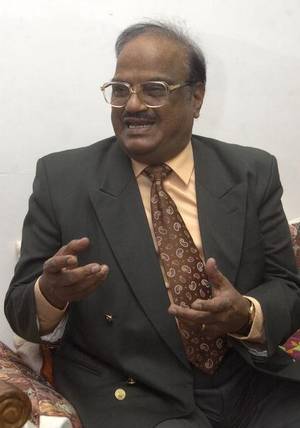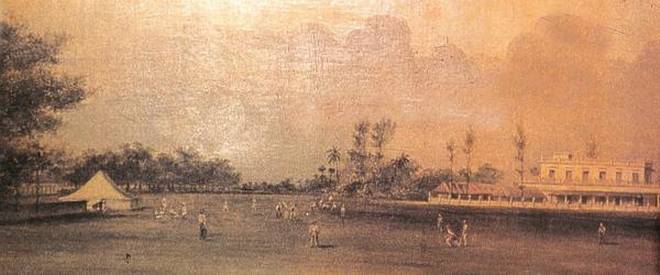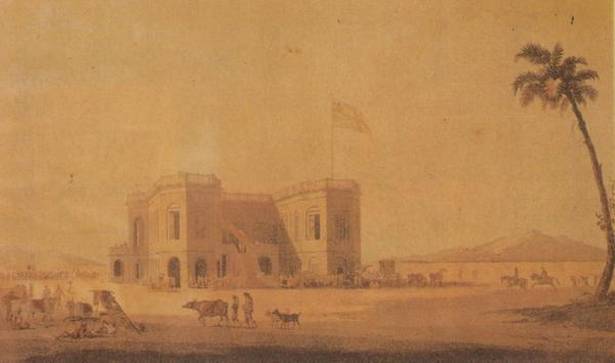Monthly Archives: July 2017
Painter Veera Santhanam dead
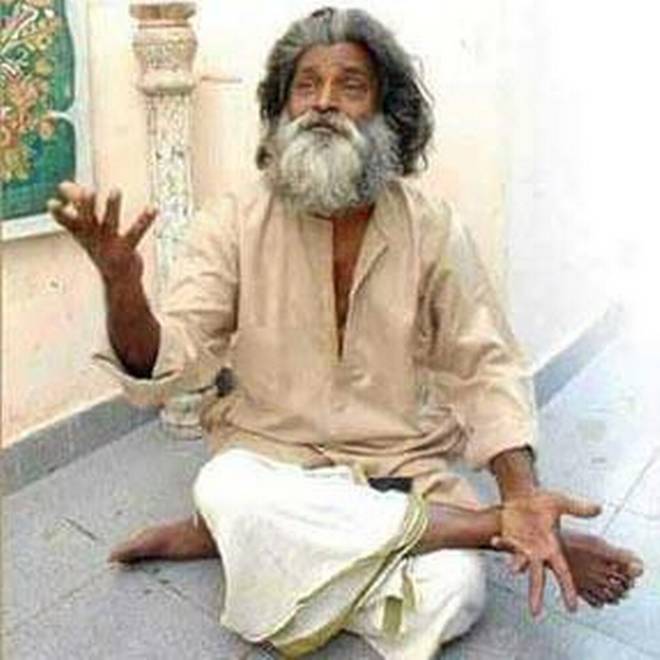
Veera Santhanam, the master of semi-figurative paintings and a strong supporter of the Sri Lankan Tamil cause, died here on Thursday. He is survived by his wife and two daughters.
“We — Aathimoolam and Santhanam — worked for the Weavers’s Service Society, launched by Pupul Jayakar with the support of Indira Gandhi,” said noted painter Marudhu, a friend of Santhanam. Santhanam was from Uppiliappankoil and drew inspiration from traditional colour patterns, particularly south Indian puppetry and wall paintings.
“We are all the students of great master Dhanapal. While we studied in Chennai, he went to the art school in Kumbakonam,” said Mr Marudhu.
He worked closely with all Tamil Nationalist groups and participated in protests in support of the Sri Lankan Tamil cause. He had also acted in a few films.
source: http://www.thehindu.com / The Hindu / Home> News>Cities> Chennai / by Special Correspondent / Chennai – July 14th, 2017
When Ooty was a Briton’s recovery home
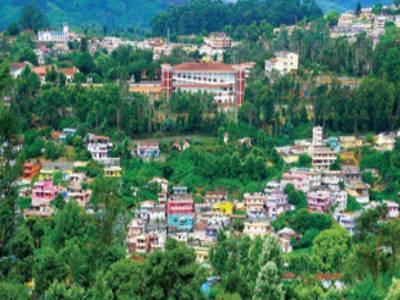
__________________________________
HIGHLIGHTS
___________________________________
About 190 monsoons ago, the Board of Control of East India Company, on the recommendation of governor Sir Thomas Munro, gave its stamp of approval to establish a hill station on the Nilgiris primarily to revitalise sick soldiers. And what is known today as the ‘Queen of Hill Stations’ was established on July 6, 1827.
“The Nilgiri Mountains was in possession of the British since 1800. It was only after collector John Sullivan’s visit to the hills in 1819 that the idea of developing a station on the hills for the sake of sick soldiers came about,” says Venugopal Dharmalingam, director, Nilgiri Documentation Centre (NDC), a trust recording the history of the Nilgiris.A factor that greatly helped this idea was the appointment of Sir Thomas Munro as governor of Madras Presidency . “To learn the tragic irony that Munro met his untimely death on the very day, July 6, 1827, at Pattikonda in Andhra Pradesh, is saddening,” says Dharmalingam.
Records show that it was Sullivan who had laid the groundwork for establishing Ooty. He had made repeated requests to the Madras government from 1820 to set up a hospital in the hills. To convince his superiors, Sullivan created a sense of the English countryside by building colonial-style bungalows, well planned roads, introduced English vegetables, trees and fruits. Till that time sick soldiers and officials had to go to England or Mauritius or Cape Town for rest and recuperation.
“It is interesting to learn that the Board in London could not believe that so near to the Coimbatore was a cold and salubrious place which was the dream of every British suffering in the hot, disease-ridden plains,” says Venugopal, adding it was only in 1826, the recommendation came through when Munro visited Nilgiris and saw for himself what Sullivan had been exalting about.
Munro sent his recommendation in May 1827 to the board stating that though the Nilgiris may not be suitable for setting up a hospital, but officers of the civil and military services could visit the hills on their own for recovery. “To reinforce his proposal, Munro argued that a sum of Rs 170 lakh had been spent in the previous three years to send sick officers to England.”
Stating further the healthfulness of the Nilgiris had not been correctly assessed by the young medical officers, Munro’s recommendations thus go, “It seems therefore advisable that we should station permanently on the Hills a Medical Officer qualified to make the necessary observations on the climate”.
Thus was born the hill station, to heal the sick British soldiers, and which till date has remained one of the most popular retreats for tired souls.
source: http://www.timesofindia.indiatimes.com / The Times of India / News> City News> Chennai News / by Shantha Thiagarajan / TNN / July 13th, 2017
Forensic guru Chandra Sekharan passes away
He cracked the Rajiv assassination case; helped identify bomber Dhanu
Renowned forensic expert, Pakkiriswamy Chandra Sekharan, who helped investigators crack the Rajiv Gandhi assassination case and played a seminal role in getting back the stolen 1,500-year-old Pathur Nataraja idol from the U.K., died here on Tuesday.
He was 83 and is survived by his wife and daughter.
A former director of the Tamil Nadu Forensic Sciences department, Prof. Chandra Sekharan was awarded the Padma Bhushan.
An acknowledged expert as well as a pioneer in some forensic techniques, Prof. Chandra Sekharan deconstructed the suicide bomb attack on Rajiv Gandhi in May 1991.
He made the sensational disclosure a day after the assassination that the killer was a woman who acted as a human bomb.
He pieced together tattered pieces of denim fabric to conclude that the assassin was wearing a vest or jacket in which a bomb could have been packed.
He proceeded to reconstruct the belt bomb as well as its two-switch circuitry, one to switch on the mechanism and the other to detonate the RDX bomb.
K. Ragothaman, the chief investigating officer, recalled Prof. Chandra Sekharan’s great help. The forensic expert obtained the roll of film from a camera used by Hari Babu, a photographer who was killed in the explosion, to get pictures of the fateful public meeting.
“But for those 10 crucial photographs, we would not have been able to detect the case. While video footage taken minutes before the explosion was suppressed by none other than the then Intelligence Bureau Director, Prof. Chandra Sekharan preserved the valuable evidence and gave it to us,” Mr. Ragothaman said.
D.R. Kaarthikeyan, former CBI Director and Chief of the Special Investigation Team that investigated the Rajiv Gandhi assassination, said Prof. Chandra Sekharan had enormous knowledge in forensic science and his service was of immense help in the case.
Tracking Nataraja
He used both forensic science and traditional knowledge in establishing India’s claim over the Nataraja idol at the Royal Court of Justice in the U.K.
After the idols were stolen from the Viswanatha Swamy temple, they were hidden for some time in a haystack. Termites devoured the haystack and in the process left their ‘galleries’ on the idols. The idols were later unearthed, but the Nataraja idol alone was sold and it found its way to London. “Though the idol was cleaned a couple of times, the lower part was left untouched and I spotted the termite nest. I used that to win the case,” he once told The Hindu.
He was a much sought-after expert witness, appearing in courts across India, as well as in the United Kingdom, Singapore and Sri Lanka for both prosecution and defence.
source: http://www.thehindu.com / The Hindu / Home> News> National / by Special Correspondent / Chennai – July 11th, 2017
A Daniell now in Madrasi hands
Whether it was to celebrate Madras’ August birthday or not, Vikram Raghavan, a regular contributor to this column from the American capital, a Madras history buff, and a collector of Madras memorabilia, has just picked up the Thomas Daniell aquatint of Fort St George seen here. Thomas Daniell and nephew William were in India from 1785 to 1793 (Miscellany, April 21, 2008) and published in Britain between 1795 and 1808 “a monumental work”, Oriental Scenery, with 144 prints of Indian scenes. Of these, half a dozen are of Madras. A few more are of Mamallapuram, Tanjore, Madura and Rameswaram.
My favourites, one of which I would like to get a real-life glimpse of, are two of the earliest pictorial representations of sport in Madras. A print of the Assembly Rooms on the Race Course at Madras hangs in the Fort Museum. The other is of Cricket in India, an original aquatint which is with a private collector in Calcutta who once sent me a poor transparency of it. As this representation was dated 1792, it was probably done in Madras because that was when the Daniells had left Calcutta and were here. And if that was so, the match was at The Island, the only grounds for the game at the time.
In the picture, the bowler is shown bowling under-arm, the practice then; the bat is a club-like implement like a baseball bat; many of the fielders wear coloured trousers and the scorer is sitting a little wide off gully. A cow ambles about in a corner of the field in the foreground and at the left, by a few trees, is a tent, probably the pavilion. All this is really recognisable only if the picture is seen large. So take my word for it! It was sailors from East Indiamen, locally stationed British soldiers, and East India Company Writers and younger merchants who introduced the game in India. The first recorded cricket activity in the country dates to 1721, when visiting sailors played a game in Cambay, Gujarat, “to divert ourselves”, according to ship’s captain Nicholas Downton.
As for the Assembly Rooms, they were a kind of grandstand and clubhouse a little south of today’s racecourse where “entertainments” were held, a ball organised for every race day evening; the races were in the morning, then it was off to work and back again for waltzes and minuets. The first reference to organised sport in Madras, racing at St Thomas’ Mount, is in 1775.
As for Vikram’s original colour-engraved aquatint, it dates to 1797 and is titled South East View of the Fort St George, Madras. The scene was probably viewed from somewhere near Royapuram. It shows masula and other boats, four men pulling a boat through the surf, and ships well out to sea in Madras Roads. Madras Harbour was many years in the future.
*****
When the postman knocked…
Clarifying my Institute of Mental Health (IMH) story (Miscellany, June 26) is my Australian correspondent, Dr A Raman, whose hobby is Madras medical history. His research deserves a book one day. Meanwhile, a more accurate story from him than mine about what began in Purasawalkam in 1794 as ‘The Madras Madhouse’ run by Valentine Connolly. It was a leased building (at ₹825 a month) to which Surgeon Maurice Fitzgerald succeeded, holding charge until 1803. James Dalton took over, rebuilt the facility and ran it till 1815 as Dalton’s Mad Hospital. Its cases included ‘circular insanity’, later described as ‘manic depressive illness’ and today as ‘bipolar illness’.
Government involvement started in 1867 with approval for a facility to be called the Madras Lunatic Asylum (later called the Government Mental Hospital and from 1978 the IMH). The Asylum, raised in the 66.5 acres of Locock’s Gardens, Kilpauk, opened in 1871 with 150 patients and Surgeon John Murray as Superintendent. By 1915, there were 800 patients, 80 per cent of them civilians. About half the cases were classified as ‘mania’, about 20 per cent as ‘melancholia’ and about 25 per cent as ‘dementia’. ‘Criminal lunatics’ were kept segregated.
Cycling Yogis will mark Madras Week with a booklet called Cycling Trails. It includes 40 trails with details about what to see on them. Every trail in the booklet has been cycled on by the compilers over the last year. Some of the trails which caught my attention were called ‘Madras the First’, ‘Madras the Oldest’, ‘Historic Residences’, ‘Mahatma Gandhi’ and ‘Police Heritage’. For booklets, contact ramanujar4u@gmail.com, then make use of them during Madras Month.
This is not about Madras at all, but strange things happen around us all the time. And the recent strike by our Government medicos drew Don Abey’s attention to it. He refers to the Government Medical Officers’ Association in Sri Lanka calling off their agitation in mid-strike when the National Movement for Consumer Rights threatened “it would stage ceremonies in front of the homes of GMOA executive committee members to invoke God’s curses on them for holding hundreds of thousands of patients to ransom!” Powerful are the threat of death-threatening curses and pleas of consignment to Hell!
The chronicler of Madras that is Chennai tells stories of people, places, and events from the years gone by, and sometimes, from today.
source: http://www.thehindu.com / The Hindu / Home> Society> Madras Miscellany – History & Culture / by S. Muthiah / Chennai – July 10th, 2017
Danish missionary’s bungalow converted into museum
“After obtaining permission from Tamil Nadu government, the restoration project was taken up in coordination with TELC The bungalow has now been restored without affecting the original structure,” she said adding that the bungalow had been converted as a museum
Nagapattinam :
A heritage bungalow occupied by German-born Danish missionary Bartholomeus Ziegenbalg, who set up the country’s first ever printing press in 1712, has been restored and converted as a museum at nearby Tarangambadi.
Francke Foundation, Halle, Germany, has sponsored the restoration work and museum project in coordination with Tamil Evangelical Lutheran Church (TELC), Jasmine Eppert, project manager of the museum, told PTI.
Ziegenbalg’s translation of the New Testament into Tamil in 1715, and the New Jerusalem church that he and his associates constructed in 1718, are still in use today.
Eppert further said Francke Foundation wanted to preserve Ziegenbalg’s legacy and came forward to restore the bungalow where Ziegenbalg lived in Tarangambadi.
“After obtaining permission from Tamil Nadu government , the restoration project was taken up in coordination with TELC. The bungalow has now been restored without affecting the original structure,” she said adding that the bungalow had been converted as a museum.
“Articles used by Ziegenbalg, including remains of the printing machines used by him, models of the typeface letters, books have all been collected and put up in the museum. The museum will be inaugurated on July 15,” she said.
source: http://www.outlookindia.com / Outlook / Home> The News Scroll / Nagapattinam – July 06th, 2017
Through the pages of history
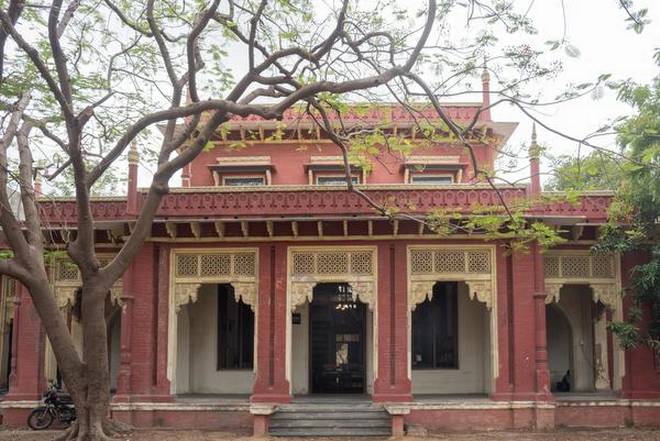
Despite its dwindling membership, The Madras Literary Society, home to several books dating back to the 18th and 19th Centuries, continues to guard its rich legacy
Nestled between 70,000 tomes is a world of books from the 17th and 18th Centuries. From Aristotle to letters from Annie Besant, this 205-year-old treasure trove perched in the heart of Nungambakkam has acquired its out-of-the-way status in recent years. With a loyal membership of not more than 300 avid readers, the Madras Literary Society, tested by the challenges of time, boasts yellowing pages and dusty shelves that hold books far older than most of its regular visitors. Set up in 1812 and moved to its current red-bricked Rajasthani inspired building in 1906, the society was initially created for educational and military purposes of the British colonist as a mausoleum of English, French, Dutch, Latin and Portuguese books.
A team of four manages the society which stands tall with its gold emblem emblazoned on its multiple doors. R Vinayagam, the assistant librarian, shied away from the constant questions and admitted that he enjoys his occasional PG Wodehouse and Sherlock Holmes as he rifles through the catalogues. When asked about any ghosts lurking in the midst of the murky and tall shelves, librarian Uma Maheshwari laughed saying, “We have thousands of protectors against ghosts”, referring to the books. The staff entertain a smattering of visitors on a daily basis which mostly consists of researchers, retired personnel and housewives, looking for ancient volumes as they climb up the cobwebbed iron ladders.
Apart from the various 18th to 19th Century books, the collection constantly continues to expand thanks to the 800-900 donations they received along with some books that the Society itself has purchased in the last two years.
In 2006 and 2007, the Society underwent renovation which saw sections of the library being closed off for the general public, which eventually led to a decline in its 790-strong family cutting membership by nearly half.S Muthiah, one of the oldest members of the society, nostalgically recalled, “It used to be a wonderful library, but it’s a bit run-down now.” But this only pushed the Society to innovate various ways to encourage new members to join the library and rebuild. During The Hindu Lit Fest, the Society introduced the concept of ‘Book Adoption’ which spurred people to pay for the preservation of depreciating copies of books such as Isaac Newton’s Latin volume from 1726. “They have been making gallant efforts to restore books and public support is needed for that. Individual restoration has been initiated for rare books and quite a few have been restored,” Muthiah said.
With valiant efforts such as these, Madras Literary Society is taking strides to guard its long and rich legacy.
source: http://www.thehindu.com / The Hindu / Home> Society> History & Culture / by Divya Murthy & Fiza Anand / July 05th, 2017
09th
New gallery opened at Chennai rail museum
Chennai :
Chennai Rail Museum opened a a new gallery on Sunday. Hydari Gallery is named for a former general manager of Integral Coach Factory (ICF) .
https://www.youtube.com/watch?v=-PLcArTliW8
Chennai Rail Museum opens new gallery showcasing glorious heritage of Indian Rail
source: http://www.youtube.com / The Times of India
The gallery showcases rail heritage photos, scale models and three tier running models of different coaches. Referring to former ICF chief I Hydari as a “combination of technical competence and great leadership”, a senior ICF official spoke about his valuable contribution to the development of Indian Railways.
“I think this museum is informative and the work is absolutely amazing. There is so much of information since the inception of railways and it is remarkable,” said Urmila Satyanarayana .
The exhibits and photos tells the story of railways and its contribution to the growth in trade and transport. There were talks on the railway line built on Bhor Ghat in the early 1860s connecting Mumbai and Deccan Plateau in an attempt to make cotton transport easier.
Bharathanatyam exponent Urmila Satyanarayana and director of Art World Sarala Banerjee inaugurated the gallery. ICF general manager S Mani was also present.
source: http://www.timesofindia.indiatimes.com / The Times of India / News> City News> Chennai News / TNN / July 10th, 2017
